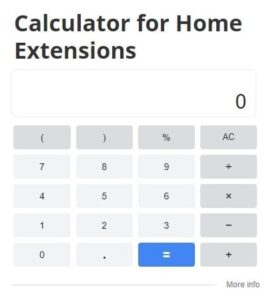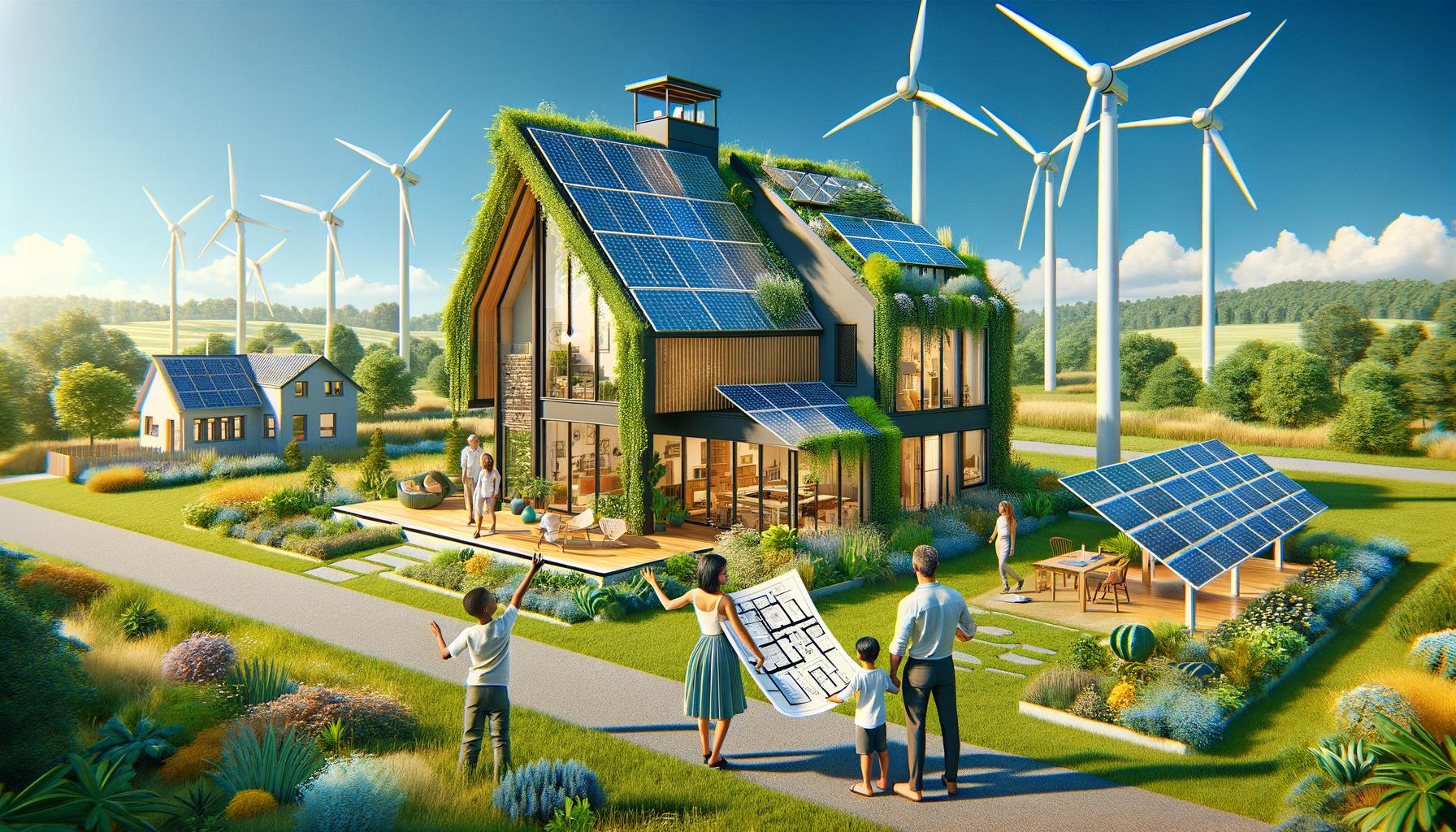
At Home Owners Association, we’ve seen a growing interest in energy efficient home construction. Building a home that minimises energy consumption not only reduces utility bills but also lessens environmental impact.
In this post, we’ll explore key strategies for creating an energy-efficient home, from design principles to renewable energy integration and smart technology. These approaches can lead to significant long-term savings and a more sustainable living environment.
How to Design an Energy-Efficient Home
At Home Owners Association, we observe that the foundation of an energy-efficient home lies in its design. A well-designed home can significantly reduce energy consumption, leading to lower utility bills and a smaller carbon footprint.
Maximise Natural Light and Heat
Orientation plays a key role when you design an energy-efficient home. For best passive heating performance, daytime living areas should face north. Ideal orientation is true north, but orientations of up to 10° west of north are also effective.
To enhance this effect further, incorporate thermal mass materials like concrete floors or brick walls. These materials absorb heat during the day and release it at night, which helps maintain a stable indoor temperature.
Create a Tight Building Envelope
Insulation and air sealing are essential for maintaining your home’s temperature. The Australian Building Codes Board recommends R-values (a measure of thermal resistance) between R2.0 and R5.0 for walls, depending on your climate zone. For roofs, the recommended values range from R3.7 to R6.3.
Air sealing is equally important. Focus on sealing gaps around windows, doors, and any penetrations in your walls or roof.
Choose the Right Windows and Doors
High-performance windows and doors can make a significant difference in your home’s energy efficiency. Energy-efficient glazing can reduce the peak heating and cooling load, which can reduce the required size of an air-conditioning system by 30%.
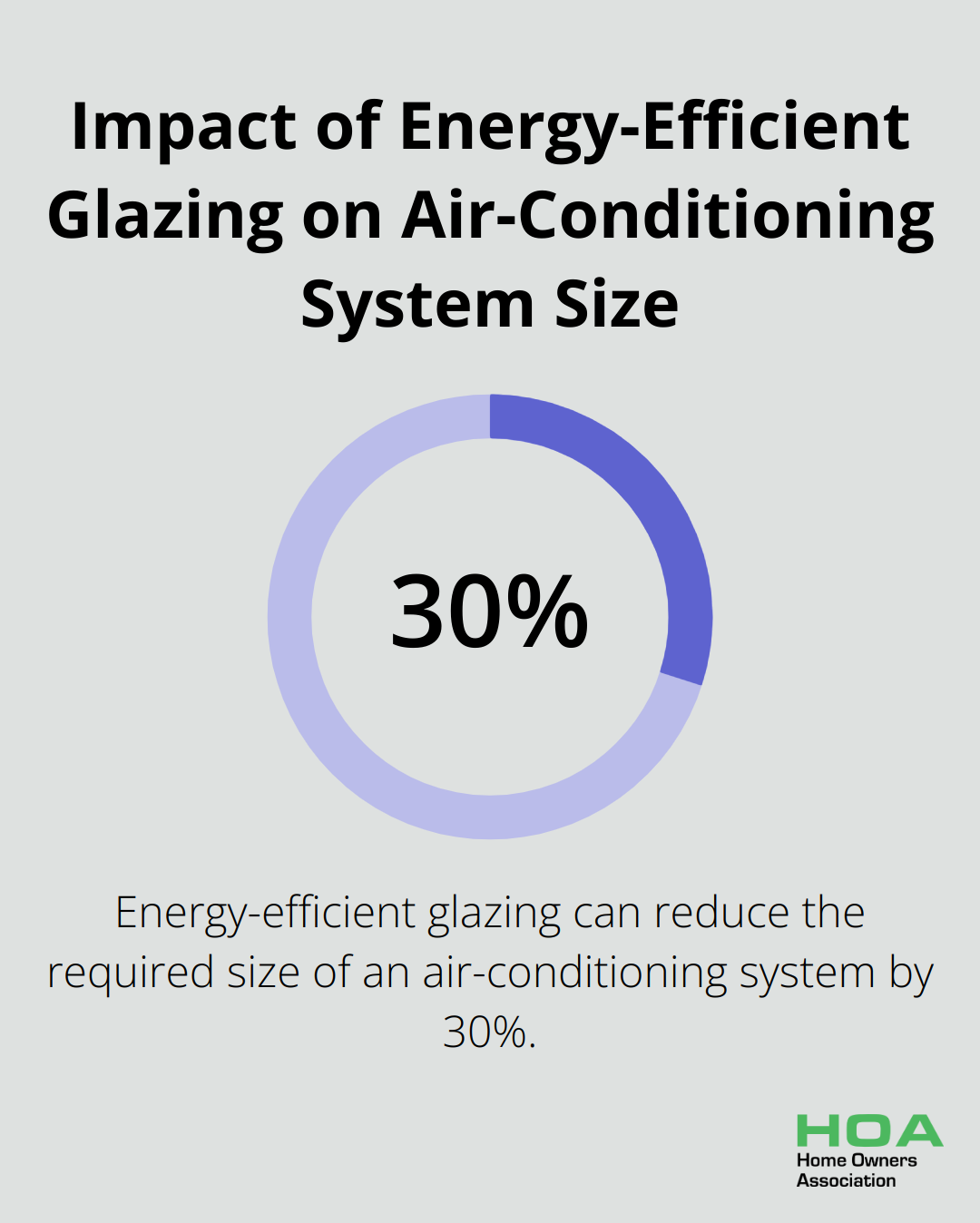
For doors, consider materials with high insulation properties like fibreglass or steel with polyurethane foam cores. Ensure all doors have proper weatherstripping to prevent air leakage.
Invest in Efficient HVAC Systems
Your heating, ventilation, and air conditioning (HVAC) system can account for up to 40% of your home’s energy use. Opt for energy-efficient models with high star ratings.
Try to zone your HVAC system to heat or cool only the areas in use.
The implementation of these design principles sets the stage for a highly energy-efficient home. While the initial investment might be higher, the long-term savings on energy bills can be substantial. In the next section, we’ll explore how to integrate renewable energy sources to further enhance your home’s efficiency and reduce its environmental impact.
Harnessing Renewable Energy for Your Home
At Home Owners Association, we observe a significant increase in homeowners who integrate renewable energy sources into their properties. This shift reduces reliance on the grid, cuts energy costs, and minimises environmental impact.
Solar Power: The Australian Favourite
Solar energy tops the list for Australian homeowners. The Clean Energy Council reports that Australia passed four million cumulative rooftop PV installations in November 2024, simultaneously reaching 25 GW of total rooftop PV capacity.
When you install solar panels, consider these factors:
- Roof orientation and angle: North-facing roofs at a 30-degree tilt work best in Australia.
- Shading: Minimise shading from trees or nearby structures.
- System size: Calculate based on your energy consumption and available roof space.
- Quality: Choose panels with high efficiency ratings and long warranties.
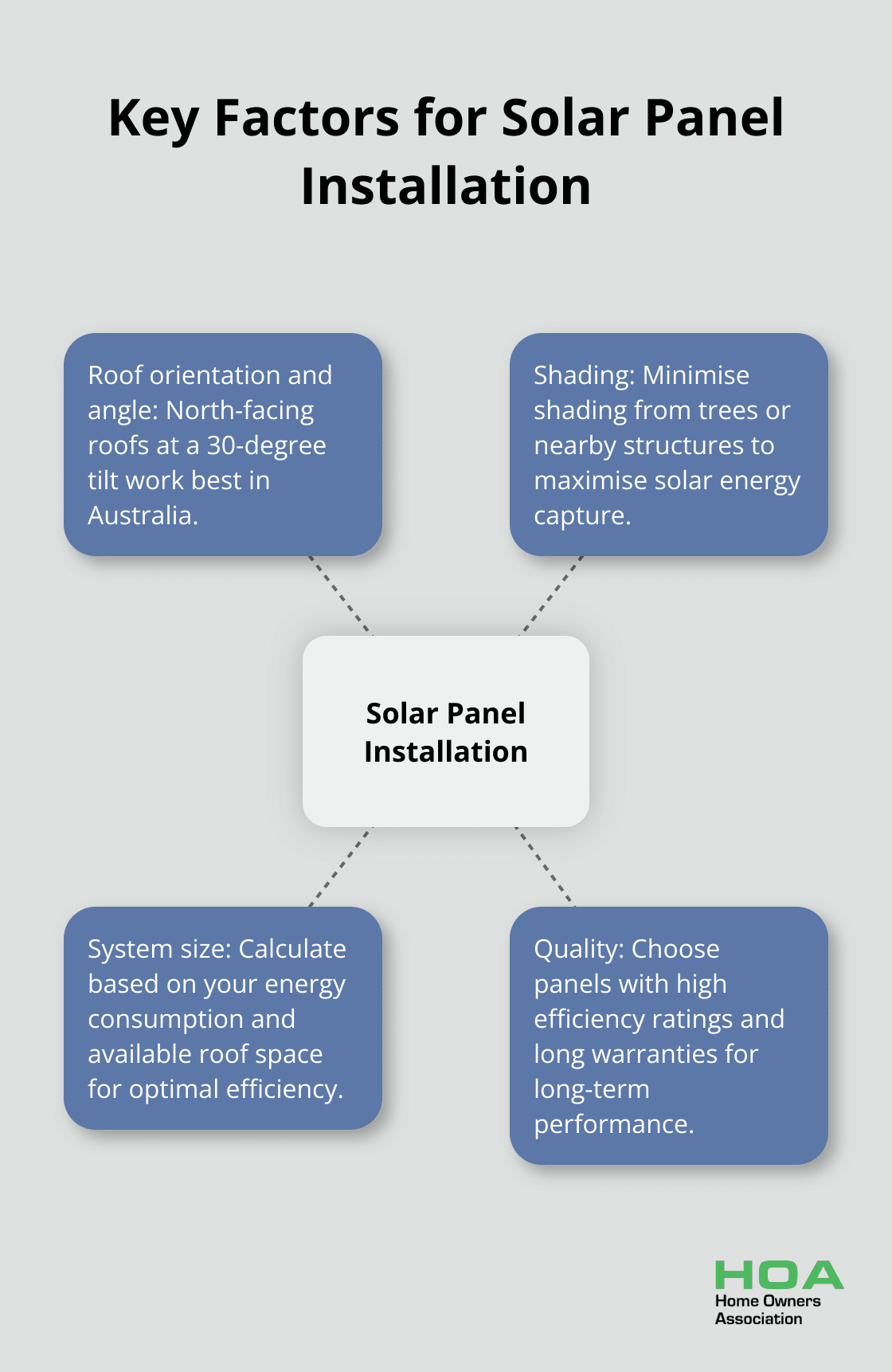
Wind Energy: A Complementary Option
Small-scale wind turbines can complement solar systems, especially in coastal or rural areas with consistent wind. A 5kW wind turbine can generate about 8,000 to 18,000 kWh annually (depending on wind conditions).
Check local regulations before installation, as some areas restrict turbine height and noise levels.
Geothermal Heat Pumps: Year-Round Comfort
Geothermal heat pumps (also known as ground source heat pumps) use the earth’s constant temperature to heat and cool homes efficiently. These systems can reduce heating and cooling costs by up to 70% compared to traditional HVAC systems.
While initial installation costs are higher, the long-term savings and minimal maintenance make geothermal an attractive option for new builds or major renovations.
Energy Storage: Maximise Renewable Benefits
Energy storage systems, particularly batteries, maximise the benefits of renewable energy.
When you choose a battery system:
- Size it based on your daily energy consumption and solar generation.
- Consider the depth of discharge and cycle life for long-term performance.
- Ensure compatibility with your existing or planned solar system.
- Check for safety certifications and warranties.
The integration of renewable energy into your home marks a significant step towards energy independence and sustainability. While upfront costs can be substantial, the long-term benefits in reduced energy bills and environmental impact are considerable. As technology advances and prices continue to fall, renewable energy integration becomes increasingly accessible to Australian homeowners. In the next section, we’ll explore how smart home technology can further enhance your home’s energy efficiency and management.
Smart Home Technology for Energy Efficiency
At Home Owners Association, we observe a significant increase in the adoption of smart home technologies for energy management. These innovative solutions enhance comfort and reduce energy waste and costs.
Intelligent Climate Control
Smart thermostats transform home temperature management. These devices learn preferences and routines, automatically adjusting the temperature to optimise comfort and energy efficiency. Nest thermostats can help save an average of 12% on heating bills and 15% on cooling bills.
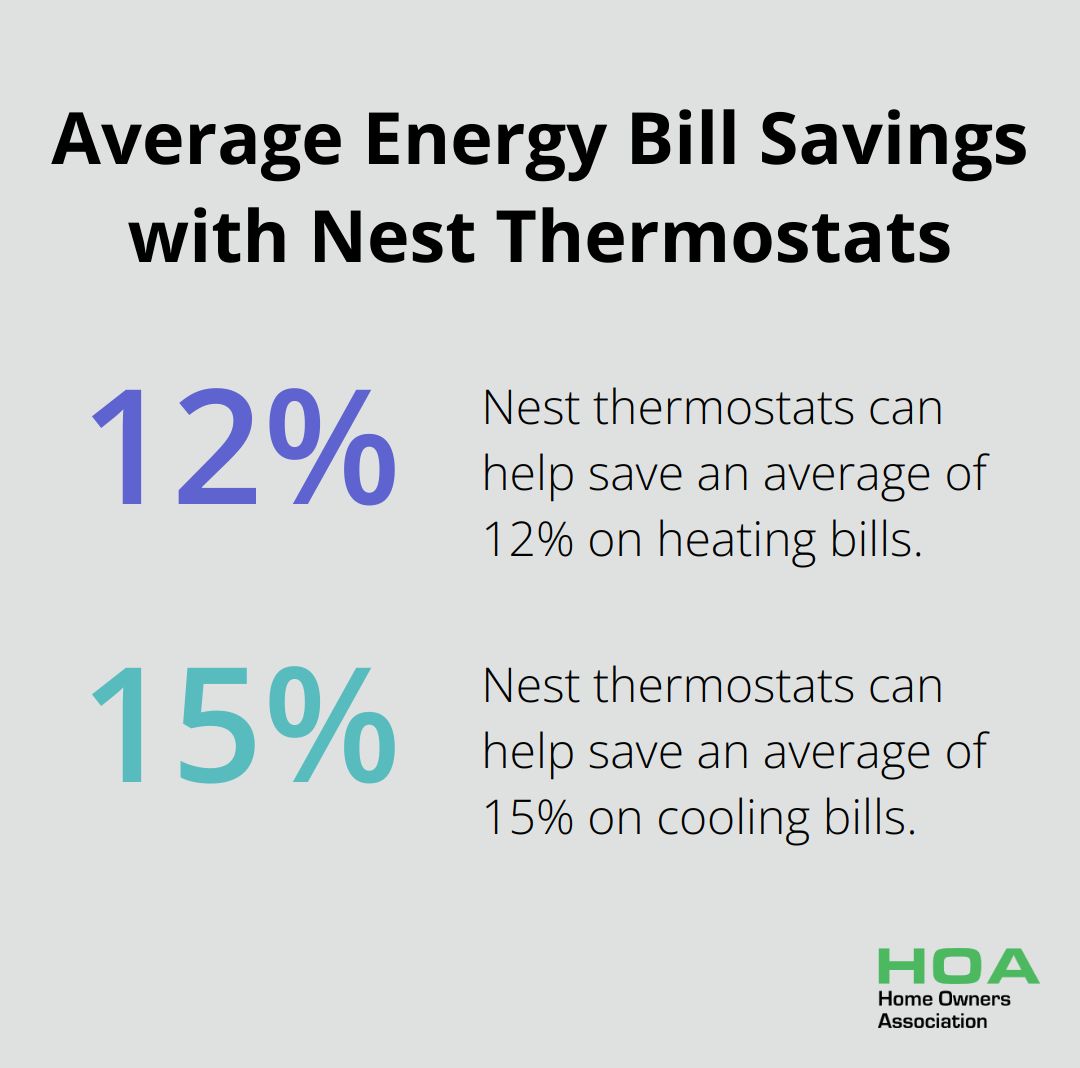
These smart systems allow remote control of home climate via smartphone apps. Users can adjust settings when away or ensure their home is at the perfect temperature upon return.
Real-Time Energy Monitoring
Energy monitoring systems provide valuable insights into home energy consumption patterns. These devices connect to electrical panels and track energy use in real-time, often breaking it down by individual appliances.
The Sense Home Energy Monitor (which many homeowners have installed) can detect individual devices and show exactly how much energy each uses. This detailed data helps identify energy-intensive appliances and informs decisions about usage or upgrades.
Smart Appliances and Lighting
Automated lighting and smart appliances revolutionise energy management. Smart LED bulbs (like those from Philips Hue or LIFX) can turn off when not in use or adjust brightness based on natural light levels.
Smart appliances, such as washing machines and dishwashers, can run during off-peak hours when electricity rates are lower. Many connect to the internet to access real-time electricity pricing data, automatically running when rates are at their lowest.
Comprehensive Energy Management Systems
Home Energy Management Systems (HEMS) unite all these smart devices, providing a centralised platform for monitoring and controlling home energy use. These systems can integrate with solar panels, battery storage, and smart appliances to optimise energy flow and usage.
A HEMS might automatically run a dishwasher when solar panels produce excess energy, or it might draw from battery storage during peak pricing periods to minimise grid electricity use.
The initial investment in smart home technology can be significant. However, the long-term savings and increased control over energy use make it a worthwhile consideration for many homeowners. As these technologies evolve and become more affordable, we expect to see them become standard features in energy-efficient homes across Australia.
Final Thoughts
Energy-efficient home construction represents a significant step towards a sustainable future. These homes offer enhanced comfort, improved indoor air quality, and increased property value. Homeowners enjoy more stable indoor temperatures, fewer drafts, and reduced noise pollution.
The cost savings associated with energy-efficient homes are substantial. Many homeowners report recouping their initial costs within 5-10 years through lower utility bills and reduced maintenance expenses. The environmental impact of energy-efficient homes cannot be overstated, as they significantly decrease carbon emissions.
Home Owners Association supports Melbourne homeowners in their journey towards energy efficiency. Our expertise in the local market (combined with our network of trusted professionals) ensures that our members have access to the latest innovations in energy-efficient home construction. The shift towards energy-efficient homes will continue to redefine housing as we move forward.





